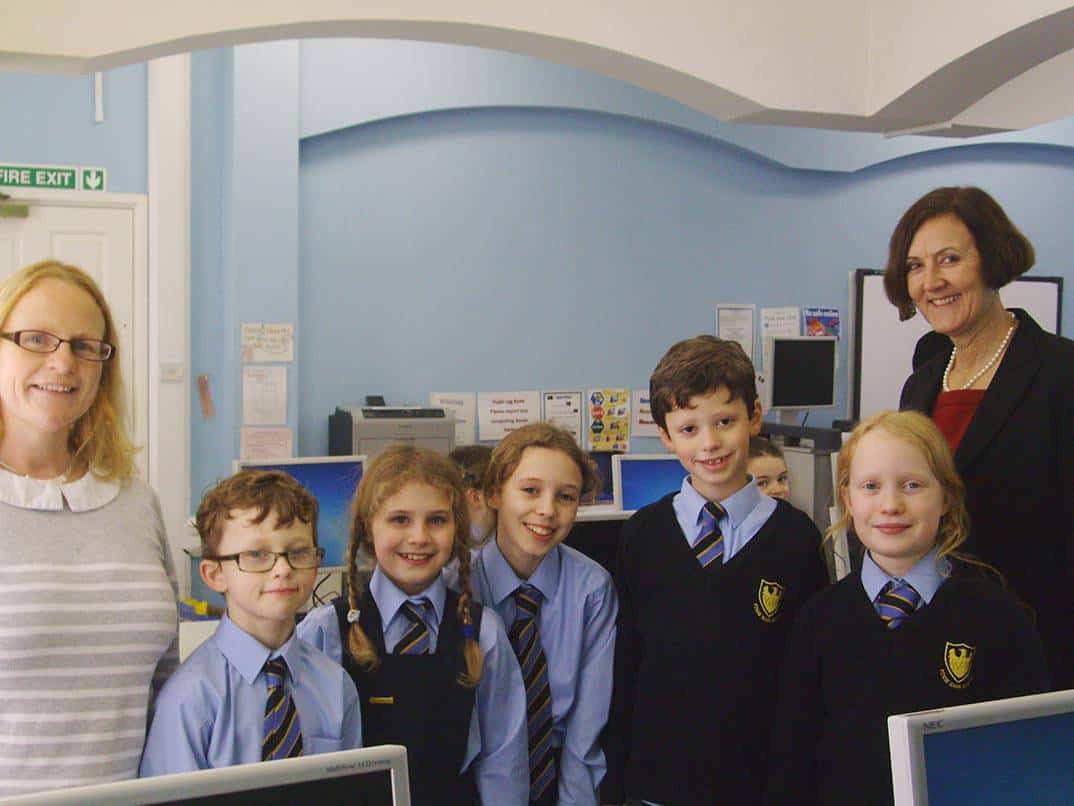One of the biggest dilemmas for parents in the 21st century is how to keep their children safe online. On the one hand, mums and dads naturally want to protect their children from predators. On the other, they don’t want them to miss out when all their friends are communicating with one another on Facebook or Instagram.
For mum Alicia Coad, the dangers became apparent one day when her eight-year-old son let slip that he was being targeted by strangers while playing an online game. Within weeks, she had designed an app to keep children safe, and it is now being trialled at nine schools across the country – including Fosse Bank School at Hildenborough.
Mrs Coad said, who has three children aged six, eight and nine, said that until recently she thought she had a handle on their use of online apps and games as they were not able to download anything unless she entered a password.
She said: “The turning point was when my eight-year-old innocently told me that when strangers contacted him on Clash of Clans if they swore at him he didn’t speak to them.
“I started to speak to other parents to try and find out more. It became apparent that my children – and most of his class – were all playing this game and chatting to each other on it. I had no problem with that but I did have a problem with strangers being able to chat to them.
“If the school playground was open to all and sundry parents would be in uproar, however most parents had no clue that effectively this is what was happening online.”
Mrs Coad decided to explore the possibilities of creating an app to keep children safe while playing games online or using social media accounts, and it was while her brother was explaining about a highly secure online communication tool he had developed for the financial services industry that she had a ‘lightbulb moment’.
She said: “This is what we needed for children. And so ChatFOSS was born – Friends Only Stay Safe.”
The app is a communication platform which enables children to contact one another online with the highest levels of encryption and security. Anyone can set up an account and they need to enter an email address to do so, but they do not need to have a mobile number or share any personal information. Each person has their own unique login and password, and when logged on they can communicate with their friends by sending picture, sending messages or video calling one another.
What makes it safe is that unlike other systems, users cannot search for their friends. To join someone on the system you must know their email address. When an email is sent to connect, the user has to accept for the two to be linked together.
The level of security is so high, in fact, that it is rated as suitable for users aged from four.
ChatFOSS is believed to be the first social media app suitable for children under the age of 13.
After making a presentation to staff, parents and pupils at Fosse Bank the school became the latest to sign up to a three-month pilot study.

Headmistress Miss Alison Cordingley said: “We know that children are surrounded by invitations to communicate via technology and in the same way that we teach our pupils to keep safe in real life, we must also teach them to use technology safely and responsibly.
“We were very impressed with Alicia’s presentation which demonstrated the benefits of this innovative app. It is extremely child-friendly, our pupils enjoyed communicating with each other within minutes of logging on, and both parents and teacher appreciate the benefits of using ChatFOSS.”
Mrs Coad added: “I want my children to embrace technology. I do not have a problem with them wanting to chat to their friends, indeed as a chatterbox child I spent most of my childhood on the phone. At the moment my children like making videos – again I have no problem with that. In fact, I am pleased that they are working together, using their initiative, being creative and learning editing skills.
“I do, however, have a problem when they tell me they want to upload them to Youtube for all and sundry to see.
“The advice from e-safety experts and teachers seems to focus on the age limits for apps, so in theory, I should just say no to my children and not let them on Instagram, Facebook and the like until they are 13. Unfortunately the world doesn’t work like that, if other parents let their children on these apps it becomes difficult for me as a parent to say no.
“Also, given how easy it is for children to get onto these things, it is not difficult for them to do it behind my back. The advice of ‘make sure you can see what they are doing at all times on the iPad or computer’ isn’t practical.
“My children do not want to go searching for porn, they do not want to talk to strangers, they just want to enjoy the internet in the same way I do. The problem is there is no way for them to do this. ChatFOSS aims to offer ‘the fun of social media, the safety of the school playground’.”
She added: “I realise they will make mistakes using it, but I would far rather they make those mistakes in a safe environment without the world to see. I want them to learn how to communicate online responsibly. I want them to grow up in a world where frankly they think it is weird to be friends with people online they have never met.
“In an ideal world, maybe I would stop them going on any kind of social media, but we don’t live in an ideal world, we live in the 21st century. It is my job as a parent, in the same way my parents taught me how to ride a bike, write a letter and use a credit card, to teach them how to use social media. I want to be able to help and guide them through it and ChatFOSS lets me do this.”
What is ChatFOSS?
ChatFOSS is a communication platform to enable children to communicate with each other via modern technology but without the usual risks associated with social media platforms. It is suitable for users aged four plus.
How does it work?
Anyone can set up an account as long as they possess an email address. They do not need a mobile phone number and do not need to share any personal information. Each person has their own unique login and password.
What makes it safe?
Unlike other systems, users cannot search for their friends. To join someone on the system you must know someone’s email address. When on the system a user, if friends with another user, cannot see who else they are connected to and cannot request their friends.
What can a child do on ChatFOSS?
A user can, if friends with someone, send messages, video call, send photos or video clips or voice recordings. They can also share documents – such as a piece of group homework – with them. A user can also be part of a group, but each friend has to accept the request and see who else is in the group. This prevents children being put in groups that they may not want to be part of.
Why should people let their child on ChatFOSS?
ChatFOSS encourages children to enjoy technology in a safe way. A child who uses ChatFOSS will learn to use the internet to communicate only with friends, not with strangers. Recent research showed the average 12-15 year old has never met three in 10 of the friends listed on their main social networking pro? le. ChatFOSS has been designed to destroy this culture of communicating with strangers.
Can you see what a child is doing on the system?
You can log on with your child and add a secondary email address of your own. This email address will then receive noti? cations of who your child has joined friends with. This will enable you to be aware of who they are talking to without seeing every conversation.
Can an adult have a ChatFOSS account?
Yes. Adults are more than welcome to set up an account – and indeed for families it can be a useful way of communicating and sharing photos. Groups can be set up for individual families enabling you to share holiday snaps and the like. Again an adult will not be able to search for individuals on the system and without knowing an email address will not be able to request them as a contact.








